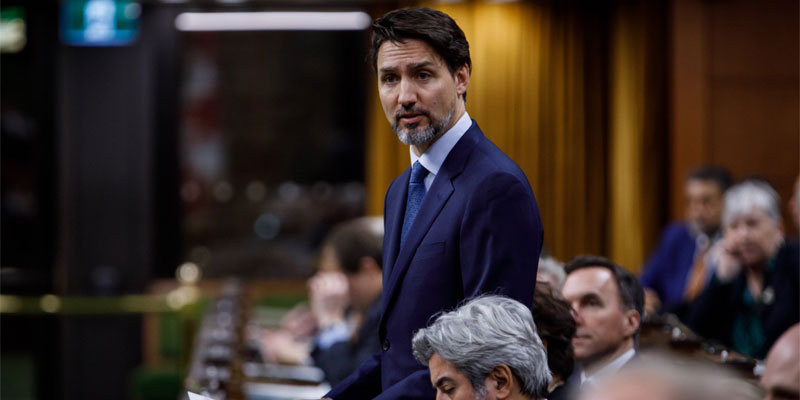Trudeau’s emissions cap reminds westerns of his father’s National Energy Program

At the climate summit in Glasgow, Prime Minister Trudeau committed to a greenhouse gas (GHG) emissions cap on oil and gas producers in Canada, and in the eyes of many in the resource sector, placed a disproportionate burden on oil and gas-producing provinces (namely Alberta) to achieve Ottawa’s pledge of net-zero emissions by 2050.
Notably missing was a clear commitment to reduce emissions from other sectors of the economy including transportation, which account for almost as much GHG emissions as the oil and gas sector. Although he acknowledged the potential harm, Trudeau provided little comfort in his speech saying it’s “no small task for a major oil and gas-producing country. It’s a big step that’s absolutely necessary.”
It’s tempting to compare our current prime minister’s emissions pledge with Pierre Trudeau’s despised National Energy Program (NEP).
First are the optics. As prime minister last century, Pierre Trudeau’s bid to nationalize the energy sector was spearheaded by his Quebec-based energy minister Marc Lalonde. This month, Justin Trudeau went to Glasgow with his new Environment and Climate Change Minister Steven Guilbeault, also from Quebec. Canada’s energy sector will treat Guilbeault, given his experience as a climate change activist, with the same disdain and distrust it had of Lalonde.
Second are the similarities of policy, which place a disproportionate burden on western provinces to support the national interest and reduce the investment climate in those provinces. Clearly, both policies foment western alienation.
Pierre Trudeau’s NEP had three broad objectives for oil and gas—nationalize the industry, increase federal revenues and secure domestic supply. Only this last objective, which included optimistic projections for zero imports by 1990, enjoyed support. The reason we don’t have zero imports today is because the first two objectives drove away capital and expertise and lowered the domestic price to a point that oilsands development took much longer to achieve.
Although both regimes favour pricing to solve their policy goals of energy conservation, for Pierre Trudeau the main desire was to encourage and augment domestic supply by extending an interprovincial pipeline to Montreal. But because of flaws in the NEP, a viable pipeline project to Quebec was not developed until 2013 when the Energy East pipeline was proposed after oil prices reached $100 per barrel. Many take credit for thwarting this proposal including Guilbeault who cofounded Équiterre, an environmental group that launched a full-frontal assault on Alberta-based oil. Not only has Guilbeault described Alberta’s resource as “dirty oil” he’s made it his life’s mission to keep Canadian oil and gas in the ground and ensure no new pipelines are built.
And yet, despite grand pledges of net-zero and hard caps on Canadian oil and gas, the Liberal government has been silent on importing oil and gas from other countries. So while Ottawa kneecaps Canadian interests, it seemingly sees no problem importing oil from countries such as Saudi Arabia and Russia.
Today’s Trudeau government has also done little to reduce emissions from other sectors of the economy. Indeed, there’s scant evidence that the carbon tax has helped reduce GHG emissions, as any GHG reductions were achieved by the provinces, specifically in the electricity sector and in heavy industry, by phasing out coal.
Demand for oil and gas will continue. We live in a large, cold and sparsely populated country that relies on natural gas and heating oil to keep us warm and gasoline and diesel to keep us moving. Putting caps on domestic emissions will not change our demand for oil or gas. It will simply shift our supply from Canadian sources to countries that are willing to sell it to us.
Author:
Subscribe to the Fraser Institute
Get the latest news from the Fraser Institute on the latest research studies, news and events.

